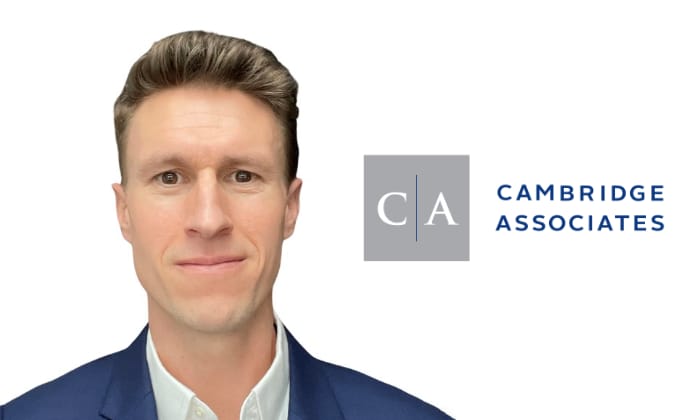Ceres, a non-profit that leads a national coalition of investors, environmental organisations and other public interest groups working to address global sustainability challenges, has highlighted parametric risk transfer, catastrophe bonds and ILS as innovative tools to address increasing climate risks and build a more resilient and sustainable insurance sector.
 Ceres has published a report that provides a roadmap it believes can help the U.S. insurance industry build resilience amid increasing climate disasters.
Ceres has published a report that provides a roadmap it believes can help the U.S. insurance industry build resilience amid increasing climate disasters.
The organisation wants to help the U.S. insurance industry “reimagine its future in a climate-changing world”, with a focus on maintaining insurance availability, affordability and also the industry’s long-term health.
In an environment of rising insurance and reinsurance costs due to elevated severe weather and natural catastrophe losses, the United States has seen insurers withdrawing coverage from some high-risk regions, while policyholders shoulder additional costs due to rising industry losses.
Ceres has proposed a 10-point plan for a new vision for the industry to navigate the new reality, including elements such as mandatory climate risk disclosure, the integration of predictive climate modelling and artificial intelligence, mitigation incentives, using forward-looking pricing strategies, implementing transition plans, the use of strict climate-resilient building codes, developing programs to ensure access to insurance for the climate vulnerable, and leveraging the insurance industry’s deep asset base to invest in support of climate transition and resilience.
That’s eight of the 10-point plan proposals, but two are worth a more detailed mention being relevant to alternative risk and capital markets backed reinsurance industry participants.
Innovative insurance products are seen as having beneficial effects, in enhancing coverage and also bringing efficient capacity to support the insurance sectors further development by Ceres.
Here Ceres’ report calls on the industry to, “Expand the use of parametric, microinsurance, and other innovative insurance products that pay out based on predefined triggers such as wind speed, rainfall amounts, or earthquake magnitude. These products can simplify the claims process, reduce administrative costs, and provide faster payouts to policyholders. They are particularly useful in regions where traditional insurance may be challenging to implement or manage. There are also a range of microinsurance applications.”
Further adding that, “In addition, the development of parametric-based financial instruments, including insurance-linked securities (such as catastrophe bonds and other weather derivatives) and reinsurance solutions, to transfer climate-related risks to capital markets and provide innovative risk management tools for insurers and businesses.”
Ceres notes that, “These innovations create a more resilient insurance ecosystem that can better serve vulnerable communities while maintaining financial sustainability under escalating climate events. The quick, reliable payouts and broader accessibility of these products help build community resilience and enable faster recovery.”
The report explains that parametric triggers can enable rapid payouts to help communities recover more quickly from disasters, while their simplified structure can reduce the administrative burden and make coverage more available in challenged regions where traditional insurance access can be limited.
While, specifically on insurance-linked securities, the report states, “Insurance-linked securities and other alternative risk transfer mechanisms expand the industry’s capacity to handle large-scale climate risks by accessing deeper capital markets.”
Ceres concludes its report by stating that, “The path forward requires unprecedented collaboration among insurers, regulators, policymakers, and communities. Through decisive action and innovation, insurers can help build a more resilient, equitable, and sustainable future-one that protects both their business model and the communities they serve.”
Many companies in the insurance and reinsurance industry are already making progress on this path, with the use of innovative and responsive risk transfer growing, while capital markets appetite for insurance related risks continually rising as well.
But, there is much more the industry can do, in terms of ensuring availability of insurance. Although pricing of risk and the ability of policyholders to pay is a sticking point, which makes another measure Ceres proposes intriguing.
The report also calls for the consideration of the creation of a Federal Climate Risk Reinsurance Program.
Ceres calls for a commission to be formed, to “evaluate the feasibility of a federal reinsurance program to provide stability during unprecedented climate catastrophes.”
“The scale of potential climate-related losses raises questions about whether private markets alone can efficiently manage these extreme tail risks,” Ceres’ report explains.
The organisation suggests a study on a program modelled on similar lines to the Terrorism Risk Insurance Act (TRIA), but for climate related risks.
Here they suggest a program with trigger mechanisms based on industry-wide loss thresholds, with risk-sharing arrangements between private insurers and federal government and premium-based funding mechanisms.
All while considering how to maintain private market participation and innovation, as well as integration with existing residual market programs, and keeping consumer protection in mind.
Ceres says, “A carefully designed federal backstop could help to stabilize insurance markets while preserving private sector innovation in climate risk management. By providing protection against truly extreme events, such a program could encourage insurers to maintain coverage in vulnerable areas while pricing for more common risks. This would help address the immediate challenges of market withdrawal and affordability while supporting the long-term sustainability of private insurance markets.
“The commission’s thorough analysis would help ensure that any proposed program learns from the successes and challenges of existing programs like TRIA and state residual markets, creating a framework that complements rather than replaces private market solutions. Moreover, this evaluation could inform broader discussions about building systemic resilience to climate risks through public-private partnerships.”
The full report brings together a lot of the ideas we often discuss in our writing and we’d recommend it as well-worth reading.





















 English (US) ·
English (US) ·